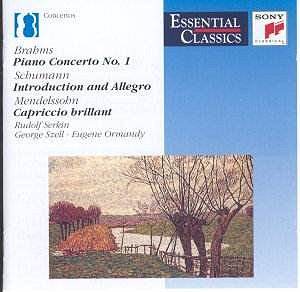 Recording Review:
Recording Review:
Composer: Paul Ladmirault (1877-1944)
Works: Poèmes Symphoniques
Performers: Orchestra of Brittany / Stefan Sanderling
Recording Date: Rennes, September 2000
Label: Pierre Verany PV700021
Duration: 56:38
Release Date: November 2001
Paul Ladmirault, a figure often eclipsed by his more illustrious contemporaries, emerges with vivid clarity in this engaging collection of his Poèmes Symphoniques. The recording features a selection of his orchestral works, each imbued with a distinct Brezhoneg sensibility that reflects both the natural beauty of Brittany and the rich cultural tapestry that inspired his compositions.
Born in Nantes, Ladmirault’s early exposure to music through his mother and subsequent studies at the Paris Conservatoire positioned him among an elite cadre of composers, including Ravel and Enescu. However, his disdain for the prevailing trends of post-war modernism led him to cultivate a uniquely personal style, one that sought to marry the lyrical with the landscape, resulting in a body of work that resonates with the ear of a true artist.
The collection commences with En Forêt, a two-movement symphonic poem inspired by the novel Un Male by Lemonnier. In L’Aurore (Dawn), the music unfolds with a delicate, impressionistic quality reminiscent of Debussy, as woodwinds and horns weave murmurs of dawn among the trees. Here, Sanderling’s direction allows the orchestral colors to bloom organically, capturing the nuanced interplay of light and shadow in a forest awakening. The subsequent movement, Les Amants (The Lovers), shifts to a more intimate and contemplative character, where the strings engage in a lyrical dialogue that speaks to the fragility of human emotion, enhanced by the lush orchestration.
Valse Triste, originally composed for two pianos, is elegantly orchestrated in this version, with Sanderling achieving a seamless integration between the piano and orchestral forces. The central theme, marked by its melancholy, is both haunting and serene, showcasing Ladmirault’s ability to evoke deep emotion through simplicity. This movement exemplifies the composer’s gift for thematic development, as the material evolves with a subtlety that engages the listener’s imagination.
In Brocéliande au Matin, an extract from the opera Myrdhin, we encounter a prelude that, while lengthy for its type, displays a coherent structural integrity that is often lacking in similar works. The thematic material is rich, with motifs that hint at the grandeur of the legend of Merlin, drawing listeners into its enchanting narrative. The performance here is particularly noteworthy for its dynamic contrasts, with Sanderling navigating the shifts between the ethereal and the powerful with deftness.
La Brière, a symphonic poem born from a silent film score, offers a blend of rustic charm and orchestral sophistication. The second movement, La Foire d’Herbignac, employs a lively folk rhythm that serves as a jarring yet delightful contrast to the preceding melancholy of Paysage triste. The buoyant character of this movement showcases the folk influences prevalent in Ladmirault’s music, allowing the orchestra to revel in the joyousness of Breton culture.
The closing Légende attempts a grander statement, with its majestic themes that echo the earlier pastoral sentiments. However, one could argue that this conclusion lacks the inspiring originality found in the preceding movements, presenting a somewhat uninspired resolution to an otherwise compelling journey.
The Orchestra of Brittany under Sanderling’s baton performs with commendable spirit and precision. The recording quality is pristine, allowing the early 20th-century idiom to resonate with clarity. Each instrumental voice is well-articulated, and the balance between the orchestral sections is finely tuned, resulting in a soundscape that is both lush and transparent.
In assessing the historical significance of these works, it is crucial to recognize Ladmirault’s role as a bridge between the Romantic and the modern—his music offers a refreshing counterpoint to the more aggressive tendencies of his contemporaries. While not as widely performed as the works of Ravel or Debussy, Ladmirault’s compositions deserve greater attention for their unique blend of lyrical beauty and evocative storytelling.
Overall, this recording stands as a testament to Paul Ladmirault’s artistry, illuminating a composer whose voice, though quieter than some of his peers, resonates with a profound sense of place and emotion. This collection not only enriches our understanding of early 20th-century French music but also reaffirms the potential of regional composers to contribute meaningfully to the broader narrative of classical music. Ladmirault’s legacy, as evidenced here, is one of quiet strength and elegance, worthy of exploration by both connoisseurs and newcomers alike.



